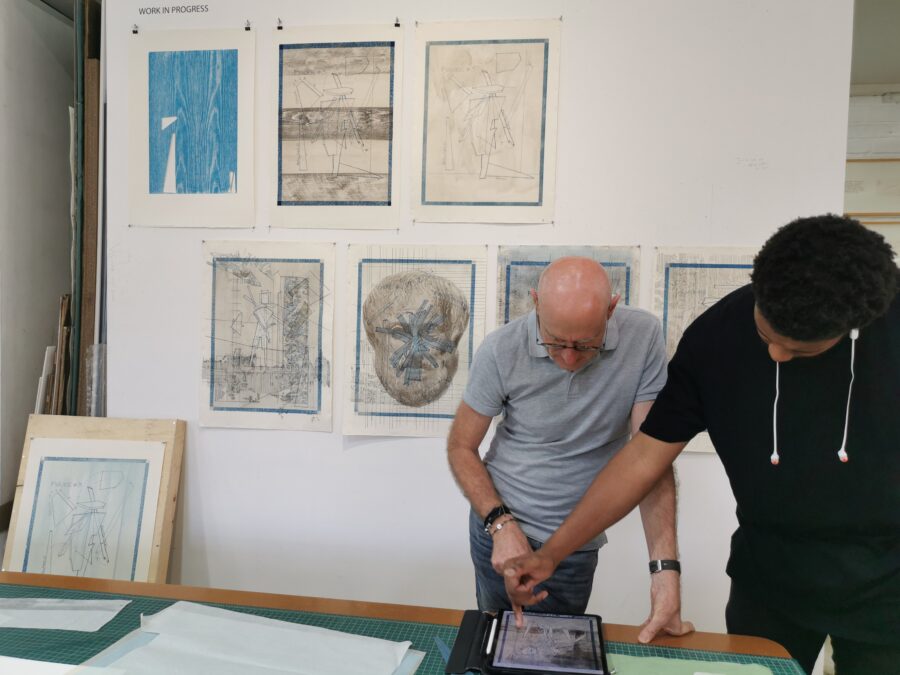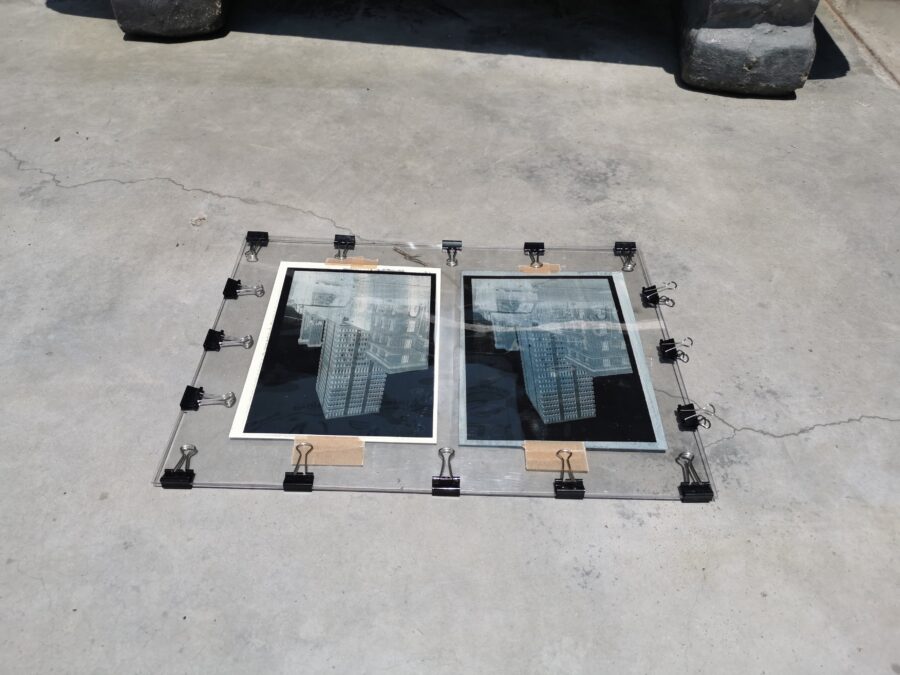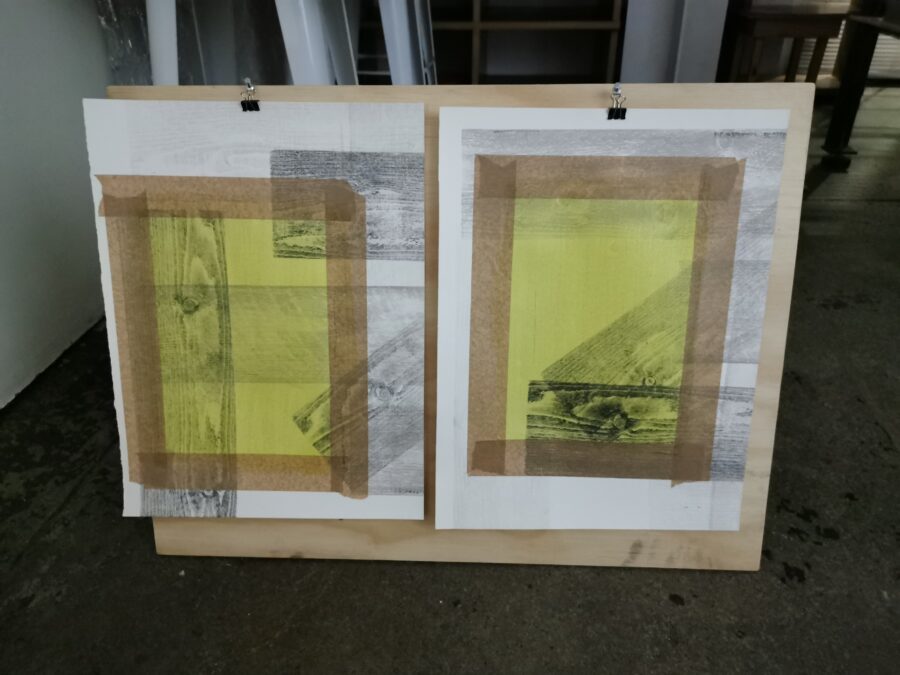
Peter Cohen is a South African architect and artist. He has recently completed his third collaboration with DKW, resulting in the body of work titled ‘Dissolving Realities.’
In this series, Cohen explores the intricate relationship between interior and exterior spaces, memory, and perception. Through meticulous layering and manipulation of various media, he creates surreal landscapes where the boundaries between reality and imagination blur. Ordinary objects take on new meanings as they merge with the surrounding environment, inviting viewers to question their perceptions of the world around them. Cohen’s work challenges traditional notions of space and identity, offering a thought-provoking journey through the complexities of human consciousness.
Cohen’s art mirrors the construction process, as he initially forms images in one medium before deconstructing and transforming them into another.
‘Dissolving realities’ will present mixed media works on paper and sculptures from the artist’s studio, as well as unique cyanotype prints made in collaboration with DKW printer, Sbongiseni Khulu. The exhibition opens on the 18th of April 2024.


Written by Sbongiseni Khulu
In his latest geometric offerings Peter explores the cross-sectionalities between two dimensional and three dimensional form, considering how they relate to one’s lived environment. He does this by means of digital illustrations, traditional hand drawing and cyanotype on paper.
Founded in 1842 by Sir John F. W. Herschel cyanotype is a UV light sensitive/dependent process of exposing film negatives and or found objects on any coated surface. It was originally intended for the reproduction use of technical drawings i.e. Blueprints. As such the 5 works born from Peter’s explorations are a combination of mediums resulting in quintessential examples of when old meets new, digital meets analogue, and hence have since been dubbed The Blueprint Series – which will be presented alongside sculptural works and works on paper.
The concept of the sculptural works originated as an inquiry into the repetition of found objects being made editionable without the use of moulds. Aiming to create pieces that could be fitted together in any assortment in order to reproduce one object many times. This concept led to the use of cyanotype layer to function as the blueprint for making the sculptures, similarly to the way that one would have a blueprint to make a building.
Thus the sculptures in themselves become a narrative device between the various works and introduces a story in and around them.
The process of the cyanotype print in itself is a fairly simple one, given the right conditions it can take as little as 20 minutes overall to complete. The light source needed to expose an image can either be an artificial UV light (often associated with exposing silkscreens in a darkroom) or the more commonly accessible option of using the sun. That said, exposure times vary depending on each option, and of course, when using the sun cloud coverage is often a disadvantage as it presents with uncontrollable variables.
Various iterations of the ‘blueprints’ and the sculptural works they refer to:





In 2 of the 5 prints one can observe hand drawn depictions of Greek sculptures (Head of Aristotle, Venus de Milo). These depictions serve as reference points to the zeitgeist responsible for ancient philosophy in connection to the idealised the human form juxtaposed by Peter’s contemporary maquette blueprints.

How to make a cyanotype:
In order to create a cyanotype one needs a liquid solution made from two equal parts of Ferric Ammonium and Potassium Ferricyanide. Once the solution is mixed it is applied consistently over the desired surface and allowed it to dry before exposing either using a film negative or found material. In this case we inverted Peter’s maquette sketches and printed them onto acetates. These acetates were then placed over the dried solution and sandwiched between two sheets of perspex to keep flat and expose using the sun for approximately 10 minutes. Once enough time had passed the images were rinsed in water and allowed to dry before Peter added his drawings on them.













Learn more about Peter’s process: